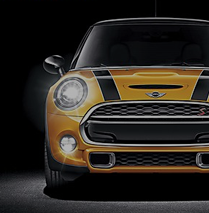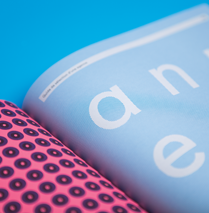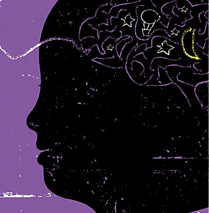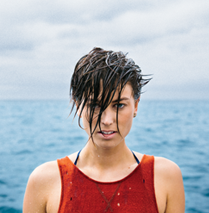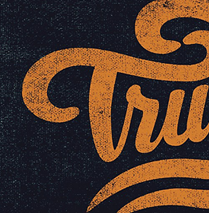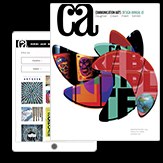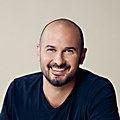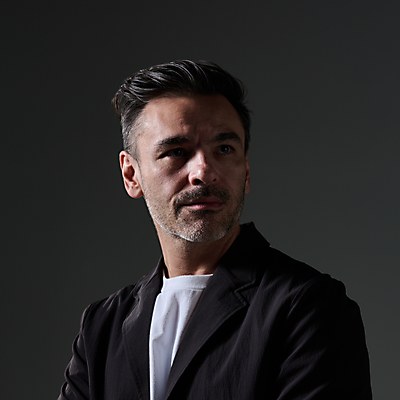How did you discover your passion for advertising and learn the skills necessary to enter the profession? When I was a kid, there were these things called VHS tapes. Imagine a small, plastic YouTube that needs to be rewound. Anyway, my sister and I had one called Commercial Crazies, which was basically just a reel of all the funniest commercials of the ’80s. That tape raised and brainwashed me. But the funny part is I didn’t realize that until the end of college.
I was a TV/radio major, but what I really wanted to do was direct big-budget feature films immediately upon graduation. When it became clear to me that I might be delusional, I started asking people for advice. It was my sister who told me that advertising was a real job people have and reminded me that I like it. So, I did that. My education in the field began in the form of an internship in the mount room at BBDO New York and a copy of Hey Whipple, Squeeze This.
What do you do in your current position as president and chief creative officer of Leo Burnett? Most chief creative officers are narrowly focused on crafting the work and winning awards. But there are so many other aspects of the business that directly or indirectly affect our creative product. The president title comes with the responsibility of driving the overall strategy of the agency and creating cohesion across departments. This is important to me because at this point in my career, I don’t just want to do great creative work—I want to build a great creative company.
That said, I spend about 80 percent of my time in the work. No matter what your level or title is in a creative agency, you have to be in the work. That’s what our clients pay for, it’s what the world sees and it’s what makes us happy.
You’ve created several notable characters throughout your career, notably Mayhem for Allstate and an ostrich who flies with the help of VR for Samsung. What would you say makes a character-driven narrative successful in an ad campaign? As much as we all love nerding out on character development, a great advertising character needs to be very simple. The audience has to get it right away. So, while the building blocks of a character are the same as any other medium, it works best in advertising when they’re quite exaggerated.
For example, all great characters have inherent tension—a motivation opposite a flaw or an incongruous twist. In advertising, those should be super blunt: A delicious M&M that’s terrified of being eaten. A caveman with overdeveloped EQ. An aeronautic enthusiast who happens to be a flightless bird. One of my favorite ad characters of all time is the La Choy Dragon, created by Jim Henson. He was a pitchman for La Choy products, but he was a dragon in a grocery store. So, he was always accidentally burning things and knocking over displays.
Ad characters are easy to create but hard to make great. Easy because the brief gives you a pretty good start on what the motivation should be, but hard because brands can be uncomfortable with flaws, failure or negativity of any sort—and that’s where a lot of the good stuff is.
At the very least, I’d encourage more advertisers to embrace a touch of darkness if for no other reason than doing so makes it feel less like advertising. I love that Progressive’s Dr. Rick is teaching people how to avoid becoming their parents, but he isn’t young or cool at all. Such a smart decision.
What other Leo Burnett campaigns have been some of your favorites to work on, and how did they change your perception of advertising? Honestly, I could go on and on about this. One of my favorite parts of this job is that every project teaches you something.
One of my personal favorites was the LegalAde campaign for Country Time Lemonade because just before it launched, we almost got cold feet. At the time, there were all sorts of big, heavy issues in the news affecting kids and families. Some people on the team worried that we might get panned for having fun overblowing a small issue while migrant kids were being separated from their families at the border and held in cages. But we had a hunch that people would appreciate a brand bringing them some levity and a bit of dumb fun. So we crossed our fingers and pressed forward. Turns out, people absolutely loved it.
While I appreciate all the very important cause-related work that our industry creates, I wholeheartedly believe that people want brands to be positive and fun. Life is hard. Ads are annoying. Our work should make people smile.
Outside of Leo Burnett, you’re also a board member of Marwen, an after-school program providing free arts education for underserved Chicago students. What inspired you to join this program? Two things—one personal, and one more societal. On a personal level, creative kids tend to be weird kids. It’s not bad to be a weird kid; it’s actually awesome, but it’s hard. Marwen is a place where creative kids feel at home.
On a societal level, creative work is very powerful. It moves people, and it shapes culture. Underserved goes hand in hand with underrepresented. So, I believe anything we can do that might increase underrepresented voices in creative professions is probably a good thing.
What do you consider to be the greatest headline of all time? I stink at picking favorites, so I’m going to go with the most recent awesome headline I’ve seen. It’s the headline Nike just wrote to honor Caitlin Clark breaking the all-time NCAA scoring record. “You break it, you own it.” Of course, it’s accompanied by an iconic image of Caitlin triumphantly raising her arms after draining a three.
What I love about this line, besides its simple poetry and the fact that it works perfectly with the image, is that it’s been immediately adopted by culture. It’s not just an ad, it’s also a poster that kids everywhere are hanging in their bedrooms. And it’s now been put on countless knockoff T-shirts for sale all over the internet. Any time you put a thought out into the world and the people immediately commandeer ownership, that’s what it’s all about.
If you could choose any product or organization to create an ad for, what would it be, and why? Toto Washlets, hands down. Literally every toilet in Japan has an electronic bidet toilet seat. Why this wonderful piece of technology has failed to catch on in every developed country on the planet is one of life’s great mysteries. Somebody needs to help create awareness of this product in America, and I’d be honored to be that guy.
What advice would you give to young creatives entering the industry today? Go into the office. Just go there. Good things will happen. ca


